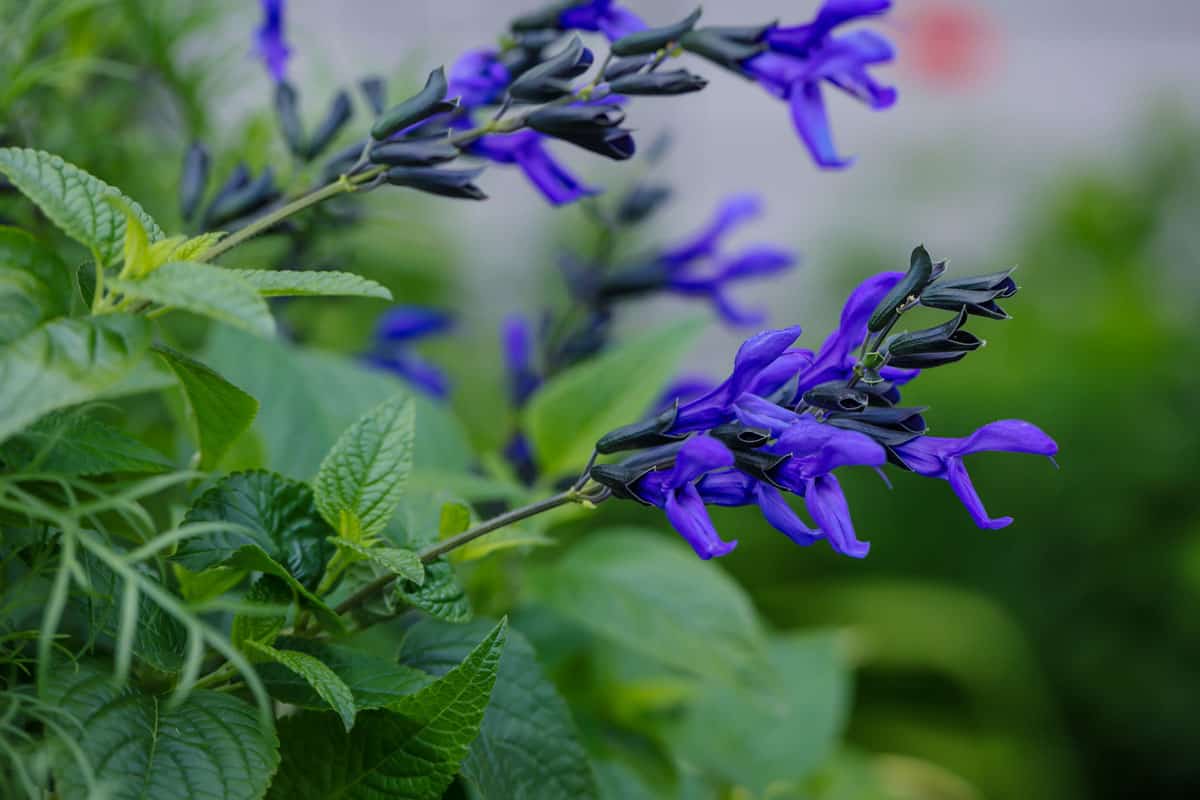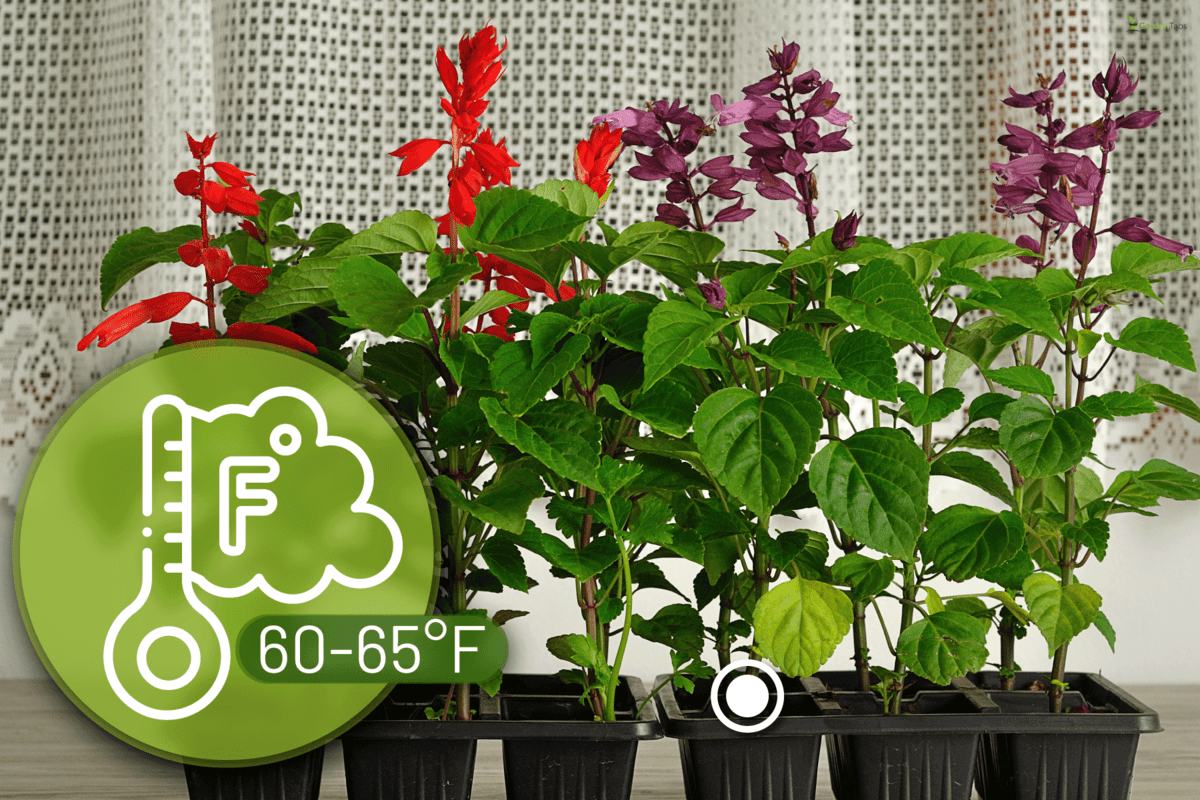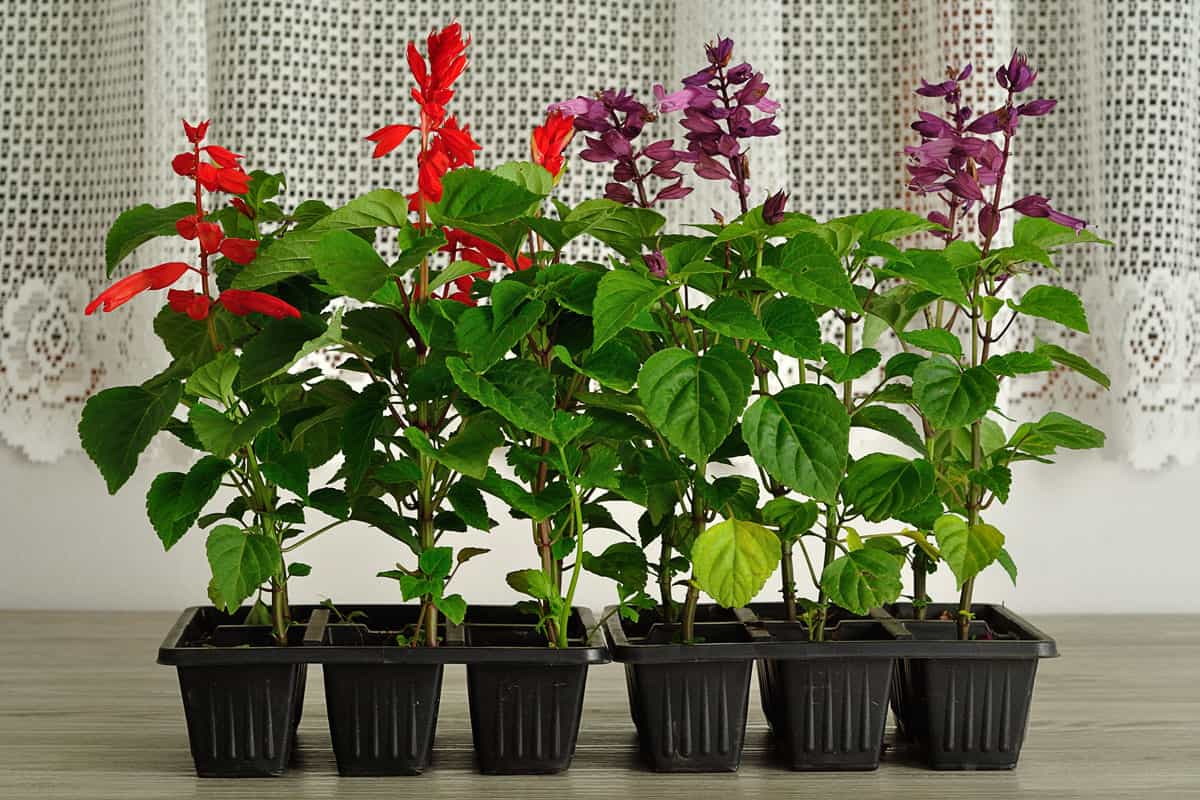If you love black and blue salvias and want to ensure they survive the winter and bloom beautifully in spring, you've come to the right place. We've done some research on this subject to guide you thoroughly and here's what we have discovered.
Black and blue salvias can continue to thrive in winter and provide a splash of color in the garden year after year if you properly provide the following it requires:
- Watering
- Mulching
- Fertilization
- Pruning
- Protection From The Cold
- Sunlight
- Pest Control
In this article, we will provide you with detailed information on each of the requirements mentioned above. Also, we will discuss some potential occurrences that your black and blue salvias may experience during the winter season and other information to understand salvias plants more. So keep reading.
What Happens To Salvias In Winter?

Salvias are a popular and diverse group of flowering plants that are native to many parts of the world, including North and South America.
Black and blue salvias, also known as Salvia guaranitica, are particularly well-known for their striking blue-black flowers and ability to attract hummingbirds and butterflies.
When it comes to winter, salvias, like many other plants, can be affected by colder temperatures, changing light conditions, and other environmental factors.
However, the specific response of black and blue salvias to winter conditions depends on a variety of factors, including their location, the severity of the winter weather, and the particular variety of the plant.
In general, black and blue salvias are considered hardy perennials, meaning that they can survive the winter and grow back the following year. However, their ability to do so depends on a few key factors.
Firstly, black and blue salvias are not as cold-hardy as some other types of salvias. They are native to warmer regions and prefer temperatures that are consistently above freezing. If temperatures drop below 20°F for an extended period, the plant can become damaged or even killed.
Secondly, the amount of sunlight that the plant receives can also impact its winter survival. Salvias prefer full sun to partial shade, and in the winter, they need enough light to keep their roots alive. In areas where the days are short and the sun is weak, salvias can struggle to get enough light to survive.
Lastly, black and blue salvias require well-draining soil to prevent root rot, which can be especially problematic in the winter when the soil is colder and wetter.
How To Care For Black And Blue Salvias In The Winter?

Black and blue salvias require some special care during the winter months to ensure their survival and healthy growth in the following spring. Here are some tips on how to care for these plants in the winter:
Watering
It's important to water your black and blue salvias deeply and thoroughly before the onset of winter. Make sure the soil is well-drained, as waterlogged soil can cause the roots to rot.
During the winter months, it's best to water your plants sparingly, only when the soil is dry to the touch. Overwatering during the winter can lead to root rot and other issues.
Mulching
Mulching can be a great way to protect your black and blue salvias during the winter. Adding a layer of mulch around the base of the plant can help to insulate the soil and protect the roots from the cold.
Use a layer of straw, leaves, or wood chips, making sure to keep the mulch several inches away from the plant's stem to prevent rot.
Click here to see this straw mulch on Amazon.
Click here to see this pack of wood chips on Amazon.
Fertilization
Avoid fertilizing your black and blue salvias during the winter, as the plant is in a state of dormancy and doesn't need the added nutrients. Overfeeding can cause new growth to emerge during a time when the plant should be conserving its energy.
Pruning
Pruning your black and blue salvias in the fall can help to promote healthy growth in the spring. Cut back the stems to about 6" above the soil level, removing any dead or damaged branches. Pruning helps to prevent the plant from becoming too woody and promotes strong, healthy new growth.
Protection From The Cold
Black and blue salvias are generally hardy plants that can tolerate cool temperatures, but they may need protection in extreme conditions.
If you live in an area with harsh winter weather, you may want to cover your plants with a frost blanket or other protective covering. Be sure to remove the covering during the day to allow the plant to receive sunlight.
Click here to see this frost cloth blanket on Amazon.
Sunlight
Black and blue salvias require plenty of sunlight to survive, so it's important to make sure they are in a spot that receives enough light during the winter months.
If your plants are in a spot that gets limited sunlight during the winter, consider moving them to a sunnier location or supplementing their light with grow lights.
Pest Control
Winter pests such as spider mites can damage your black and blue salvias, so it's important to keep an eye out for signs of infestation. If you notice webbing or mottled leaves, treat your plants with insecticidal soap or oil.
Click here to see this insecticidal soap on Amazon.
Watch the YouTube video below to give you an idea of how to overwinter your black and blue salvias.
Do Salvias Lose Their Leaves In Winter?

Salvias are a diverse group of plants that include many different species and cultivars, each with its own unique characteristics. While some salvias are evergreen and keep their leaves year-round, many others are deciduous and lose their leaves in the winter.
One of the most popular salvias, black and blue salvia, is deciduous and loses its leaves in the winter. As the days get shorter and temperatures drop, the plant goes into a state of dormancy, conserving energy and resources for the coming spring.
During this period of dormancy, the plant stops producing new growth and begins to shed its leaves. The timing of leaf drop can vary depending on factors such as climate, soil moisture, and the particular cultivar of salvia.
In areas with milder winters, the plant may retain its leaves well into the winter months, while in colder regions, it may lose its leaves earlier. Similarly, if the soil is dry, the plant may lose its leaves earlier than it would in soil with adequate moisture.
While the loss of leaves may make the plant appear dormant or dead, it is actually a natural and important process. By shedding its leaves, the plant is able to conserve energy and focus on the essential processes of survival, such as maintaining its root system and preparing for the coming growing season.
Can You Keep Salvias Indoors During Winter?
You can definitely keep salvias indoors during the winter months. This is especially important for gardeners who live in areas with harsh winters where temperatures drop below freezing, as salvias may not survive outdoors in such conditions.
To keep salvias indoors during the winter, it is important to provide them with the right growing conditions. The first step is to choose a suitable location.
Salvias need a bright location with plenty of direct sunlight, so choose a south-facing window if possible. If your home does not have a suitable window, you can also provide supplemental lighting with grow lights.
The second step is to make sure that the indoor environment is suitable for the salvia. Indoor air can be dry, so it is important to increase humidity levels around the plant.

You can do this by placing a tray of water near the plant, or by using a humidifier. The ideal temperature for most salvias is between 60-65°F, so try to keep the plant in a location with a relatively stable temperature.
The third step is to make sure that the soil and container are suitable. Salvias prefer well-draining soil, so use a soil mix that is designed for indoor plants, or makes your own mix using equal parts of peat moss, perlite, and vermiculite.
Choose a container that is just slightly larger than the plant's root ball, and make sure that it has drainage holes to prevent water from accumulating in the bottom.
The fourth step is to water the salvia properly. Indoor air can be dry, so you may need to water the plant more frequently than you would if it were growing outdoors.
However, be careful not to overwater, as this can lead to root rot and other problems. Give the plant some water only when you feel that the top layer of soil is dry to the touch, and be sure to provide adequate drainage.
The fifth step is to fertilize the salvia appropriately. Use a balanced fertilizer every 4-6 weeks during the growing season, and reduce or stop fertilizing during the winter months when the plant is in a dormant state.
Finally, it is important to be vigilant for pests and diseases when growing salvias indoors. Mealybugs, spider mites, and whiteflies are common pests that can infest indoor plants.
Inspect the plant regularly and take action at the first sign of a problem, using organic or chemical methods as appropriate.
If given proper attention, salvias can flourish when grown indoors, adding a pleasant pop of color and aroma to the environment throughout the winter season.
Conclusion

To ensure black and blue salvias survive the winter and thrive in spring, they need special care. Above mentioned are important factors to consider. By following these guidelines, you can help your plants survive winter and add beauty to your garden in the coming years.
Take a look at some other useful gardening articles we have below.
Should I Cover My Garden Or Garden Soil In The Winter? Do I Have To?




